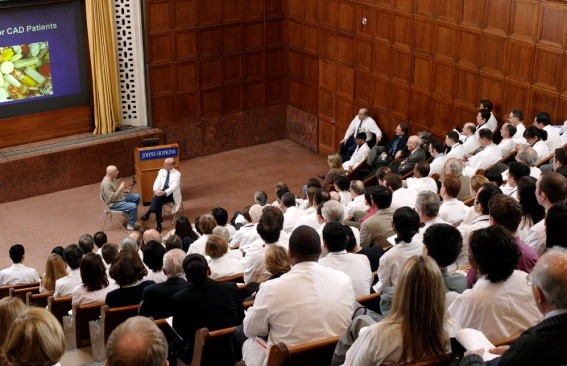
Comments? Contact IEE.
1. Objectives
1. List two advantages and two disadvantages of lecturing as a teaching modality.
2. Describe two methods to more effectively engage learners during a lecture.
3. Describe two practices to guide the use of slide software (PowerPoint) during a lecture.
2. Preparation in Advance
Reflect on a particularly good lecture you heard in the past year. Now think about the opposite. List two differences between those two lectures. Write down three items that made the “good” lecture a positive experience for you, and two items from the other that made it less than positive.
Helpful Links
- Competencies and IPE (eLearning)
- Best Teaching Practices (eLearning)
- Teaching in the Medical Setting (journal article)
4. Application of the Module
Here is a comprehensive review of ways to refresh your lecture. Scan this article and keep it for your reference. http://www.ncbi.nlm.nih.gov/pubmed/12098394
5. Next Steps and Peer Coaching
Review a specific lecture you have recently given or plan to give. List 3-4 objectives of the lecture using action words. If you had already listed objectives, make sure they are clear, formatted in appropriate action words (See Tab 5) and fit the overall objectives of the full course in which the lecture is given. Make a slide of the four key take-home points of the lecture.
6. Summary Points
1. When making use of engaging teaching methods, lectures can be an efficient and effective way to convey essential information to many learners at once.
2. When preparing a lecture, always reflect on who your audience will be, and how your lecture fits into a larger learning program (curriculum). Then create carefully constructed learner objectives for the lecture.
3. In almost all cases, “less is more” with lectures. Focus only on critical content, keep slides clean with minimal text, use images/ pictures/graphics instead of text whenever possible.
4. The use of adjuncts such as audience response system (ARS) can be effective in lectures. But low-tech approaches such as “think, pair-share”, using effective questioning, and allowing for small group “buzzing” can be equally engaging. Make sure to include at least one of these techniques in your lectures.
About the Author

Vice President of Licensure Programs
National Board of Medical Examiners
Associate Professor of Pediatrics
Johns Hopkins University School of Medicine
Module Editors
Joseph Cofrancesco Jr., MD, MPH, FACP
Director of the Institute for Excellence in Education
Johns Hopkins University School of Medicine Institute for Excellence in Education Professor of Medicine
Johns Hopkins University School of Medicine
Michael T. Melia, MD
Associate Professor of Medicine
Fellowship Program Director
Associate Director for Faculty Engagement, Osler Medical Training Program
Tausig College Advisor
Johns Hopkins University School of Medicine
